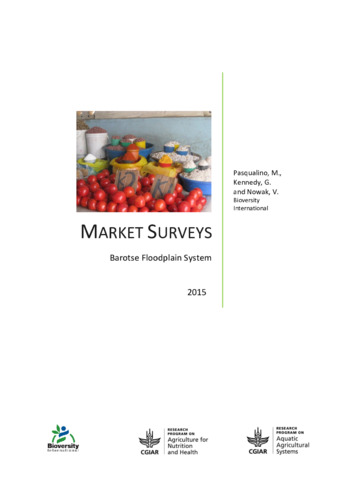Market surveys: Barotse floodplain system
The aim of the CGIAR Research Program on Aquatic Agricultural Systems (AAS) is to improve livelihoods and food security by enhancing the productivity and diversity of aquatic and agricultural systems. The AAS program in the Barotse floodplain of Zambia, which is being implemented in ten communities including; Kabula, Kapanda Lealui, Mapungu, Mwandi, Nalitoya, Nembwele, Senanga, Sifuna and Situlu in December 2014, in Nanikelako in April 2015 and in Mwandi, evaluates changes in seasonal flooding patterns and the availability of natural resources to strengthen the productivity of aquatic agricultural management practices and improve the livelihoods of the poor and vulnerable.
It is essential to understand the current food and nutrition security situation in the Barotse floodplain in order to support the AAS program objective. Food availability in the Barotse is highly seasonal; it becomes limited from August or September to January, during which time food and nutrition insecurity worsens. It is therefore necessary to identify opportunities to promote sustainable and diverse dietary options. This narrative provides an explanation of how the market research was conducted and some preliminary results. Overall, our research indicates that poor market access is a significant constraint in the Barotse floodplain, inhibiting AAS community members from securing proper nutrition and food.

